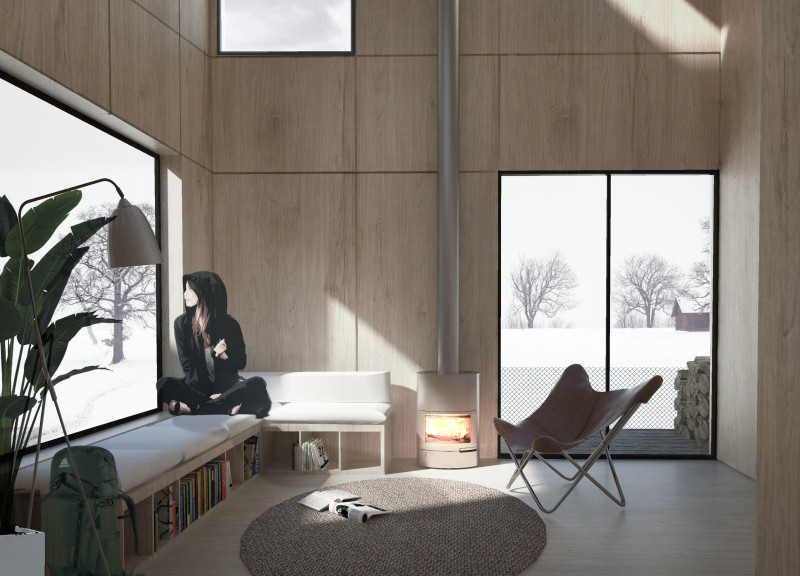5 key facts about this project
The "Poet Huts - Garden of Silence" is a design that brings together living spaces and nature in a tranquil setting. Located in a wide open field, it aims to provide a place for reflection, creativity, and community interactions. The concept is based on the experience of sound and silence, inviting visitors to connect with their surroundings thoughtfully.
Site Organization
The design carefully positions two main structures to respond to the challenges of an expansive landscape. These structures are aligned parallel to the open fields, creating a clear visual relationship with the natural setting. This arrangement emphasizes light and openness through the removal of sections within the masses. Such subtraction creates an internal garden that serves as the central feature of the project, allowing nature to flow in and become a part of the user experience.
Functional Layout
The project is divided into public and private areas. Public spaces include a gallery, common kitchen, and hosts’ cabin, which support group activities and artistic engagement. The gallery functions as a versatile area for exhibitions, readings, and workshops, encouraging social interaction among visitors. This layout highlights the importance of community while allowing for different cultural expressions, ensuring that everyone can find their place in this shared environment.
Private Quarters
The design of the private quarters offers various options for sleeping arrangements, such as cabins for four, double-bed units, and single-bed cabins. This variety serves to accommodate different types of guests, whether individuals seeking time alone or small groups coming together. Each living space maintains a connection to the garden, allowing users to step outside and engage with nature easily while still enjoying personal privacy.
Design Intent
The key aim of the "Poet Huts - Garden of Silence" is to strengthen the relationship between people and their natural surroundings. The thoughtful design invites users to immerse themselves in the quality of their environment. The internal garden acts as a peaceful area for reflection and gathering, reinforcing the project’s purpose as a retreat that respects its setting while catering to the needs of its users.



























